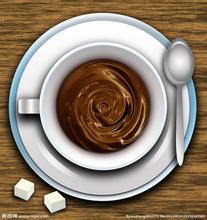Different Flavor description of Coffee Bean production area by Solar Water Honey washing method Grinding scale
Different Flavor description of Coffee Bean production area by Solar Water Honey washing method Grinding scale
1. Skin/Pulp: the outermost layer of coffee beans is covered with berry-like skin and pulp. In addition to the natural sun method, coffee beans treated by other methods must remove the skin and flesh within a few hours after picking. For coffee, peel and pulp are important by-products. In some places, people use the peel and pulp of coffee to make tea. The peel and pulp of coffee are commonly known as "Pulp" by industry insiders, and the machine used to remove the pulp is called "desizing machine".
two。 Mucous membrane (Mucilage): under the skin and pulp, a thick layer of mucus tightly wraps the coffee beans. Because this mucous membrane is extremely sticky and high in sugar, it is commonly referred to as "Honey". Not only coffee, but also many fruits have a layer of mucus inside.
3. Parchment (Parchment): inside the mucous membrane, a thin film of cellulose surrounds the coffee beans. After drying, the film looks like parchment, hence the name.
The light time of raw coffee beans treated with yellow honey was the longest. Longer light means higher heat, so the coffee can be dried within a week. In general, the drying time of coffee depends on the local climate, temperature and humidity.
The drying time of raw coffee beans treated with red honey is 2-3 weeks, usually due to weather or placed in a dark place. If the weather is clear, the grower will block part of the sun to reduce the sunshine time.
The coffee beans treated with black honey were left in the dark for the longest time and the shorter the light time. This coffee should be dried for at least two weeks. The black honey treatment of raw coffee beans is the most complex and the labor cost is the highest, so the price is the most expensive.
Brazilian coffee fields are endless and are mostly harvested mechanically in order to meet the economic benefits. When 75% of the coffee fruit in the coffee garden turns red, mechanical harvesting is started, followed by the same pre-washing operation, which is moved into the sink to remove floating beans, sift out the sunken beans, and then use a large pulp screening machine to dig out the pulp and remove the pods covered with pectin. The next stage is separate from the washing method: the sticky pods do not need to be moved into the tank to ferment, but to the outdoor bean drying farm. Because of the dry climate in Brazil, the sticky pectin on the pods will harden in about a day or so. Then use a large number of manpower to turn up and down, so that the pods dry evenly inside and outside, so as not to return to moisture and stink. For about two to three days, with the help of the natural forces of sunlight and dry climate, the pods can achieve a certain degree of dehydration. Then further dry with a dryer, the water content is reduced to 10.5%, and the pods are stored in a special container for about 10 days to further mature, in order to stabilize the quality, remove sheep skins (pods) before export, remove coffee beans, and pack them in stages. The adhesion of the mucous membrane is very strong and is not easy to remove. It must be placed in the slot for about 18-36 hours to make it alcohol and decompose the mucous membrane. There are two methods of fermentation, namely wet hair alcohol and dry hair alcohol, as the name implies, the former adds water, the latter does not add water. In the process of producing alcohol, the seed and the internal pulp will produce special changes.

Important Notice :
前街咖啡 FrontStreet Coffee has moved to new addredd:
FrontStreet Coffee Address: 315,Donghua East Road,GuangZhou
Tel:020 38364473
- Prev

How to put coffee beans into a manual grinder which brand is good to scale recommend
How to put coffee beans into a manual grinder which brand is good to scale? the recommended grinding tool for coffee beans is a bean grinder. Bean grinders can be slightly divided into three types: ● household manual rotary bean grinder. (suitable for demand
- Next

The Best time for Grinding Coffee beans Brand thickness Standard-Grinding degree of Italian Coffee
The best time for grinding coffee beans is the standard of brand thickness-the rough grinding of Italian coffee is suitable for filter coffee pots, which is the traditional brewing method in the United States. Medium grinding is suitable for brewing methods such as follicle type, flannel net type, siphon pot and so on. Fine grinding is suitable for coffee distiller (already called ice drop coffee maker). Very fine grinding is suitable for brewing espresso. Ground
Related
- Guji coffee producing area of Guji, Ethiopia: Humbela, Shakiso, Wulaga
- What is the most expensive variety of Qiloso in BOP multi-variety group?
- How to store the coffee beans bought home?
- Why are Yemeni coffee beans so rare now?
- Ethiopian Sidamo all Red Fruit Sun Sun Santa Vini Coffee beans
- SOE is mostly sour? What does it mean? Is it a single bean? what's the difference between it and Italian blending?
- Is Italian coffee beans suitable for making hand-brewed coffee?
- How to choose coffee beans when making cold coffee? What kind of coffee beans are suitable for making cold coffee?
- Just entered the pit to make coffee, what kind of coffee beans should be chosen?
- Can only Japan buy real Blue Mountain Coffee? What are authentic Jamaican Blue Mountain coffee beans?

